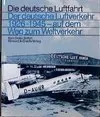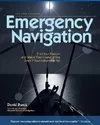
-
 Anglický jazyk
Anglický jazyk
World War II American electronics
Autor: Source: Wikipedia
Source: Wikipedia. Pages: 58. Chapters: Cavity magnetron, LORAN, SCR-270 radar, AN/ARC-5, M-209, List of U.S. Signal Corps vehicles, SCR-584 radar, Tizard Mission, Survival radio, SCR-299, Hallicrafters SX-28, SCR-268 radar, High frequency direction finding,... Viac o knihe
Na objednávku, dodanie 2-4 týždne
18.18 €
bežná cena: 20.20 €
O knihe
Source: Wikipedia. Pages: 58. Chapters: Cavity magnetron, LORAN, SCR-270 radar, AN/ARC-5, M-209, List of U.S. Signal Corps vehicles, SCR-584 radar, Tizard Mission, Survival radio, SCR-299, Hallicrafters SX-28, SCR-268 radar, High frequency direction finding, National HRO, Alaska Communications System, Joan-Eleanor system, Hammarlund Super Pro, Gun data computer, SHORAN, AN/MPN, Astatic Corporation, GMC CCKW, BC-348, AN/MRN-1, SCR-300, Chevrolet G506 trucks, H2X radar, SCR-536, BC-610, CXAM radar, SCR-284, AN/ART-13, AN/MRN-3, M-94, AN/CRN-2, BC-342, SCR-197, Signal Corps Radio, SCR-277, AN/APQ-13, SCR-658 radar, AN/MRN-2, SCR-694, SCR-610, AN/UPN-1, SCR-203, SJ radar, K-35 trailer, K-34 trailer, K-55 trailer, K-72 trailer, SCR-784, M-325. Excerpt: LORAN (LOng RAnge Navigation) is a terrestrial radio navigation system using low frequency radio transmitters in multiple deployment (multilateration) to determine the location and speed of the receiver. The most recent version of LORAN in use is LORAN-C, which operates in the low frequency portion of the electromagnetic spectrum from 90 to 110 Kilohertz. Many nations have used the system, including the United States, Japan, and several European countries. Russia uses a nearly identical system in the same frequency range, called CHAYKA. LORAN use has been in steep decline, with the satellite based Global Positioning System (GPS) being the primary replacement. However, there have been attempts to enhance and re-popularize LORAN, mainly to serve as a backup and land-based alternative to GPS and other Global navigation satellite system (GNSS) systems. The current LORAN system has been phased out in the United States and Canada. The United States Coast Guard (USCG) and Canadian Coast Guard (CCG) ceased transmitting LORAN-C (and joint CHAYKA) signals in 2010. LORAN was an American development, advancing the technology of the British GEE radio navigation system that was used early in World War II. While GEE had a range of about 400 miles (644 km), initial LORAN systems had a range of 1,200 miles (1,930 km). It originally was known as "LRN" for Loomis Radio Navigation, after Alfred Lee Loomis, who invented the longer range system and played a crucial role in military research and development during World War II, but later was renamed to the abbreviation for the more descriptive term. LORAN systems were built during World War II after development at the Massachusetts Institute of Technology (MIT) Radiation Laboratory and were used extensively by the US Navy and Royal Navy. The RAF also used LORAN on raids beyond the range of GEE. In November 2009, the USCG announced that LORAN-C is not needed by the U.S. for maritime navigation. This decision left the fate of LORAN and eLOR
- Vydavateľstvo: Books LLC, Reference Series
- Rok vydania: 2021
- Formát: Paperback
- Rozmer: 246 x 189 mm
- Jazyk: Anglický jazyk
- ISBN: 9781155956510


 Nemecký jazyk
Nemecký jazyk 








